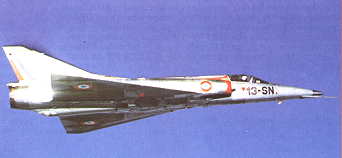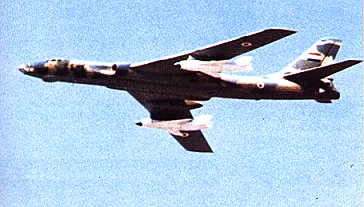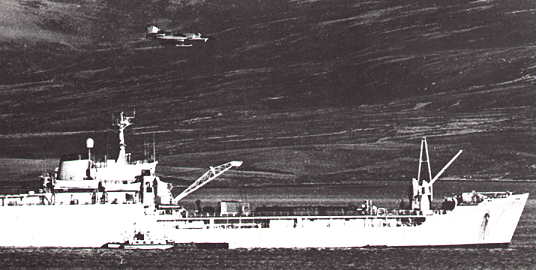 French Mirage 5
French Mirage 5
The Mirage III, although an excellent platform, suffered from a number of faults in its engine and radar system. Furthermore, in the clear skies over the Middle East there was no use for the entire avionics package provided by the French manufacturer. After contacts with Israel Dassault agreed to develop a new aircraft, based on the Mirage III but following Israeli guidelines and requirements. This aircraft was radarless but flew higher and faster and also contained more fuel than its predecessor. First flown on May 19th, 1967, this aircraft was to become the Mirage 5 and Israel ordered 50 of the type.
 French Mirage 5
French Mirage 5
In the late 1960s the close ties between France and Israel began to cool down, first with the French weapons embargo during the Six Days War (the Arabs were armed by the Soviets so the embargo mainly hurt Israel) and finally with the embargo following the Israeli commando raid on Beirut airport in December 1968 (following an attack by Palestinian terrorists on an El Al aircraft). France refused to deliver the 50 aircraft already ordered by Israel and instead used them to arm its own air force. The need in Israel to replace more than 60 aircraft lost during the Six Days War and the ongoing War of Attrition that followed it prompted Israel to privately acquire the Mirage 5 blueprints from Dassault and to secure the engine blueprints through espionage.
Under the codename "Nesher" (Vulture) Israel Aircraft Industries secretly began the construction of the new fighter in its Ben Gurion Airport facilities. On March 21st, 1971 the first aircraft took to the air and supplies to the IAF began by May of the same year. At first some disappointment was voiced over the aircraft's air-to-air characteristics but these were gradually silenced and finally disappeared after the aircraft's excellent performance during the Yom-Kippur war of 1973. In total 51 single seat Nesher A's and a further 10 double seat B's were built before production ended in 1974 . The type equipped 4 fighter squadrons - "First Fighter" squadron, "First Jet" squadron, "Hornet" & "Guardians of the Arava".

The first aerial victory of a Nesher took place on January 8th, 1973, when 4 Neshers from the "First Fighter" squadron escorted F-4 Phantoms into Syria to attack a terrorist base. In an engagement with Syrian MiG-21s, 6 MiGs were shot down, two by the Neshers.
The Nesher enjoyed great success in the Yom-Kippur war with dozens of Egyptian, Syrian and Libyan aircraft shot down, the "First Fighter" squadron alone scoring 59 victories for the loss of only 4 planes. One of the first victories of the war was not an aircraft but an AS-5 Kelt air to ground missile launched against Tel-Aviv by an Egyptian Tu-16 Badger on the first day of the war, October 6th, 1973. When Libyan Mirage 5s entered the fighting all Israeli Mirages and Neshers were marked with large yellow triangles bordered by a thick black frame to prevent a case of mistaken identity (see picture above). At least two Mirage 5s were shot down by Neshers, as well as an Israeli Phantom shot down by mistake, the navigator and the pilot, a former Nesher squadron commander, parachuting to safety. By the end of the war Nesher 510 had shot down 13 enemy aircraft while 561 had shot down 12.
 Egyptian Tupolev Tu-16 with two AS-5 Kelt missiles
Egyptian Tupolev Tu-16 with two AS-5 Kelt missilesBetween 1978 and 1981 the Nesher was retired from service, replaced with Israel's next locally built fighter, the Kfir. Exported as the "Dagger", 35 single seat examples were sold to Argentina along with 4 two seaters. These took part in the Falklands War of 1982, attacking the British task force sent to recapture the islands, facing Sea-Harriers during the landing at San Carlos. There were still 25 Daggers in service with the Argentinian Air Force (FAA) in 1993.

 back to the IDF/AF page
back to the IDF/AF page